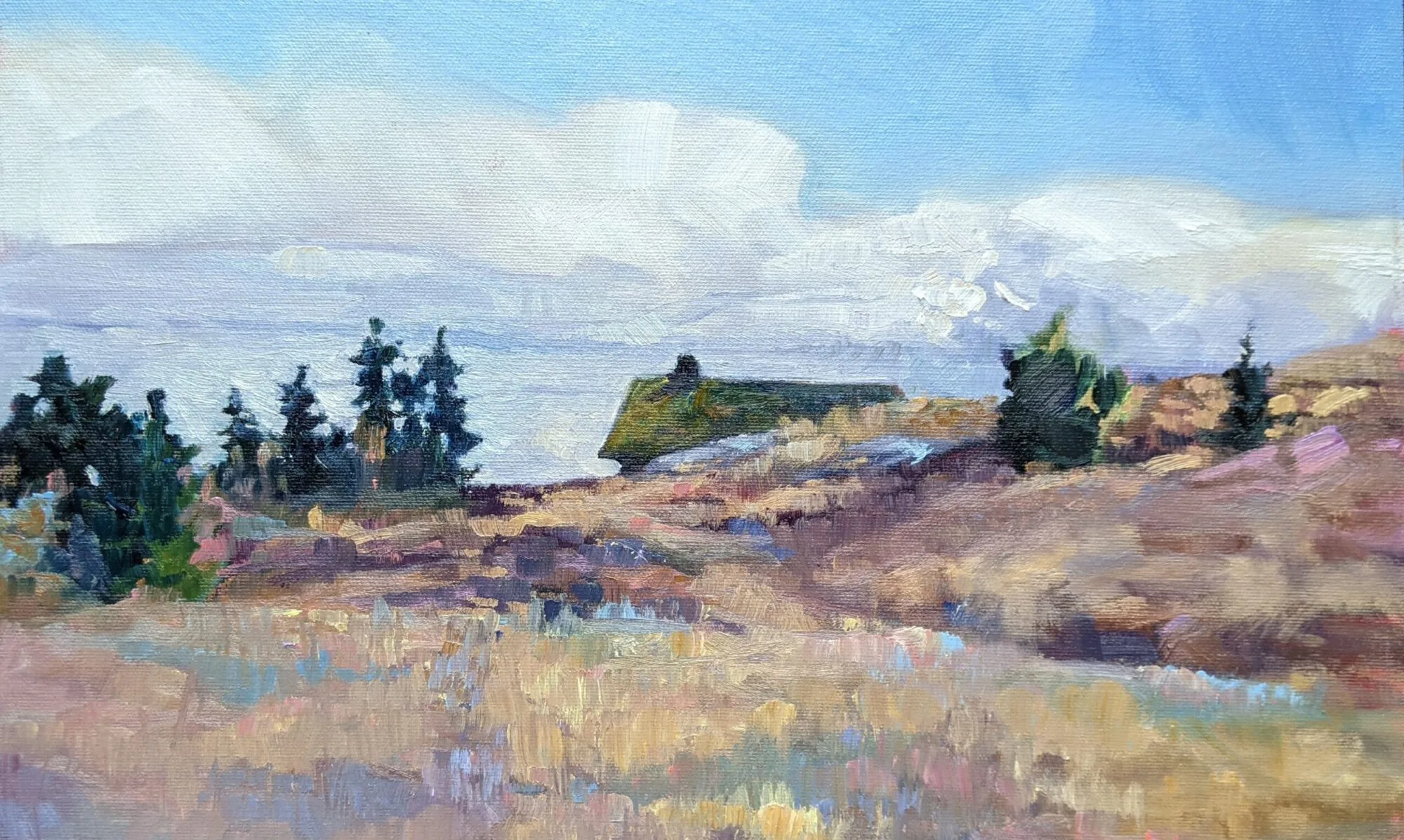Last summer it took us eight days to drive to Alaska in this vehicle. Given our detours and painting stops, doubling the time this year seemed a fair estimate.
Instead, we left the Alaska Highway at 4 PM yesterday.
East of Fort Nelson, Mary and I had to admit that not much looked familiar. True, we’d passed through here a month earlier last year. In fact, this was the same area in which we’d been stopped for hours due to an accident. But, no, we remembered nothing.
Last year, this stretch seemed so desolate. Yesterday, it seemed sedate and settled. The Al-Can looks very different going west to east. Last year, we counted off the signs of civilization as we lost them: regular gasoline, rest stops, power lines, restaurants, and other travelers, until all that was left was us and the open road. This year, those same amenities crowd back into our vision like not-particularly-welcome relatives. I’ll be happy to be in my snug Maine house again, but I do like the solitude.

The Kiskatinaw Bridge is a curving, three-span, timber truss structure built in 1942 by the Corps of Engineers. It’s still in use today, and its maintenance must be a pip.
One great difference this year has been pavement. It’s mostly past construction season. There are not many sections gravier signs left to remind Mary of poutine. However, the fact that she could joke about poutine is a good sign, for it signals the return of some appetite, even though she still remains pretty low.
About 100 km east of Fort Nelson, I pulled down an off-road track to paint some regrowth in a wildfire area. This is a subject I’d like to return to, since the geometry and variety are so fascinating. But I never relaxed while doing the painting. Plein air painters know this feeling of unease. For me it’s very rare, so when it happens, I heed it. After all, I was standing in a black bear’s salad bowl. So this was a rushed effort, and I’ll detail it in the studio.
There are a few paintings that “got away” along the Al-Can. One was of a hunting camp along the highway. I’d hoped to find one on this last day to paint. I also wanted to paint something of the Peace River Valley, for it looks so western here in its deeply cut ravine.
Alas, the Al-Can carries much more traffic near its eastern terminus. There’s gas exploration, agriculture, and much logging. The shoulder is narrow and the lay-bys few and far between. I took a few tracks off the main road, and came up with nothing. That seemed ironic, since most of the trip has been filled with stunning vistas at every turn.
“It’s an early bedtime, then,” I told myself, and pushed on to our destination. There, Mary pointed out that I’d knocked the tailpipe off while off-road. So once again this morning will be spent in a muffler shop and we’ll be that much little bit more delayed.
I remind myself that we’ve just passed through more than a thousand miles of territory where there are no muffler shops. We have a choice of four here in Dawson Creek. My irritation melts into gratitude to a providential God.




































